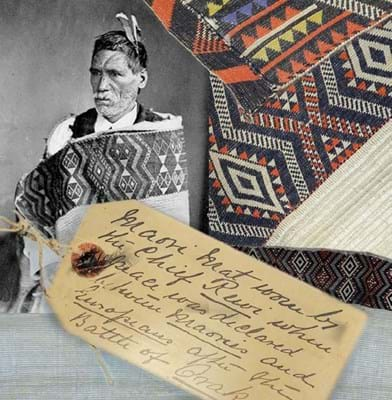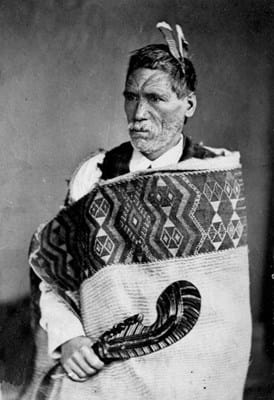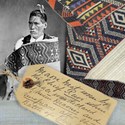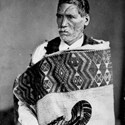The chief’s wearing blanket or kakahu, with colourful geometric decoration to the borders, has been owned by a local family for more than a century. An old hand-written paper label attached reads Maori mat worn by the Chief Rewi when peace was declared between Maoris and Europeans after the Battle of Orakau.
Auctioneer Mark Ellin said museums and institutions in New Zealand and international dealers had expressed serious interest in the piece that was scheduled to be sold in Battle on September 18 with a conservative estimate of £3000-5000.
However, after a New Zealand news channel reported the sale (aired on August 30), his firm was on the receiving end of a deluge of intimidation from trolling social-media users. Ellin quickly made the decision to cancel the sale, inform the police and return the cloak to the vendors, who have placed it in a bank vault while deciding how to proceed.
The auction house has since received more constructive correspondence from various parties in New Zealand and now a private sale that would see it returned to the Maori is a possibility. “We are hopeful that between us and the vendors we might get it back there,” said Ellin.
While significant Maori works of art are sold at UK auctions with some frequency (in 2017 a putorino or ‘bugle flute’ sold for £140,000 at John Nicholson’s of Haslemere), the cloak was deemed particularly sensitive given its association with a revered individual and a controversial moment in colonial history.
To the Ngati Maniapoto tribe it is considered a sacred object or taonga.
The warrior chief Rewi Manga Maniapoto (1807-94) led resistance to the New Zealand government during the invasion of the Waikato region from July 1863 to April 1864. The last act of the conflict – the bloody defence of Orakau – was followed by widespread confiscation and sale of Maori lands to white settlers.
Full provenance
While comments on social media suggested the cloak had been war booty, the family had traced its ownership back to New Zealand-born relative Elizabeth Chudley Grice (1887-1960) and then to her father Thomas Grice, who spent time with Rewi in the years after the Maori wars ended in 1872.
Later in life, Rewi consented to sell land, received a government pension and became a close friend of New Zealand governor Sir George Grey. Photographs of the chief taken in June 1879 depict him wearing a near-identical cloak.
Made from flax and cotton with a dyed geometric border, kakahu took up to two years to weave. This example, kept folded in darkness for close to a century in a Georgian linen cupboard, was in exceptional condition, retaining its bright colours to the borders. The cloak had been consigned close to a year ago without attribution before the family found its label and the history was researched.
Burstow & Hewett is currently in contact with social media channels in the hope of having the negative reviews and abuse removed from its digital profile.


















